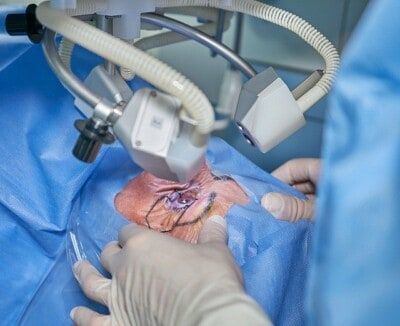Are laser surgeries safe? All about the opportunities and risks of laser surgery
To correct a defective vision, an operation is carried out on an otherwise perfectly healthy eye. Medically, the operation is usually not necessary. Nevertheless, about 100.000 to 150.000 laser surgeries performed in Germany every year.
The reason for this is that people with defective vision are tired of wearing glasses all the time. After all, they get dirty in the course of the day and often slip out of place.
Many people do not tolerate contact lenses. Therefore, the wearers of glasses would like to increase their quality of life by laser treatment of their eyes first of all.
The preliminary examination
Of course, as with any other operation, there is a risk of certain side effects and risks associated with eye treatment as well.
Those who are thinking of having a laser treatment should therefore be examined and advised in detail in advance by a competent clinic or practice, such as the Eckert Eye Center.
Not every eye is suitable for laser treatment. Stable refraction values, among other things, are an important prerequisite.
This means that the visual acuity values must not have changed much in the last time. During the preliminary examination, it is also checked whether there are any previous diseases of the eye.
Therefore, the values of pupil size, intraocular pressure and retina are measured.
The cornea of the eye
The thickness and shape of the cornea also play an essential role. Finally, the work of the laser takes place directly on it.
The corneal tissue is removed by the laser. It is important that the cornea does not become too thin, otherwise there is a risk of corneal instability.
Also, as with any surgical procedure, there is a certain risk of infection. In some cases, a subsequent correction of the laser treatment is also necessary.
Laser treatments – the different methods
If the patient’s eye is suitable for laser treatment, the patient and the doctor decide together which laser procedure should be used.
Femto-LASIK and SMILE are the most frequently chosen methods. They have the reputation of being very safe and providing good results.
Nevertheless, all available methods lead to the desired success. The possible side effects, such as dry eyes or sensitivity to glare, can also occur regardless of the method chosen.
Laser treatment of the eyes is possible regardless of the age of the patient.
However, it is better to perform the operation at an advanced age – the eye often changes at a young age.
The nearsightedness can increase over time, as the eye grows for a relatively long time. If it comes to it, nevertheless always a Nachkorrektur is possible.
Laser treatment with the SMILE method
After anesthetizing the eye, the SMILE method involves cutting the cornea by the pre-programmed laser. The thin layer is then removed through a minimal access point in the cornea of the eye.
This corrects the myopia. The procedure takes only a few minutes. Patients feel at most a strange sensation in the eye after the procedure.
The small incision has to heal after the treatment, so it is not allowed to drive shortly after and it is best to keep the eyes closed.
A certain sensitivity to glare and a milky haze on the eyes are normal. Nevertheless, the improvements can already be noticed directly after the surgery.
The SMILE method has the advantage that the wound heals extremely quickly and there is less chance of subsequent eye dryness. However, farsightedness cannot be corrected by this method.
The Femto-LASIK method
In the past, the Femto-LASIK method was considered the absolute standard for a long time. This has not changed until today. The accuracy of the results of this method is over 99 percent.
In Femto-LASIK, the laser first cuts into the upper layer of the cornea. A so-called flap is created, which is folded over.
A second laser then vaporizes and models the now exposed tissue of the cornea. Then the flap is folded into its original position. Suturing is not necessary.
The advantage of the method is that the treatment spectrum is particularly wide. It is possible to treat both astigmatism and nearsightedness as well as farsightedness.
The method has been known for a long time and is therefore extremely mature. However, there is a more pronounced risk of eye dryness later on because the nerves of the cornea are severed by the laser.
Laser eye surgery abroad?
In Germany, the cost of laser treatment is relatively high, and health insurance companies usually do not cover the costs.
To avoid the high German prices, many patients choose to have the procedure done abroad, as the prices there are much lower. However, experts strongly advise against.
Although there are surgeons and clinics outside of Germany that can be recommended, the aftercare, which is extremely important, is often difficult.
Once the patients are back in Germany, important documents and findings are often missing, making it difficult for doctors based here to draw the right conclusions and make recommendations.
The safest way is therefore in any case to choose a German doctor for the eye surgery.
